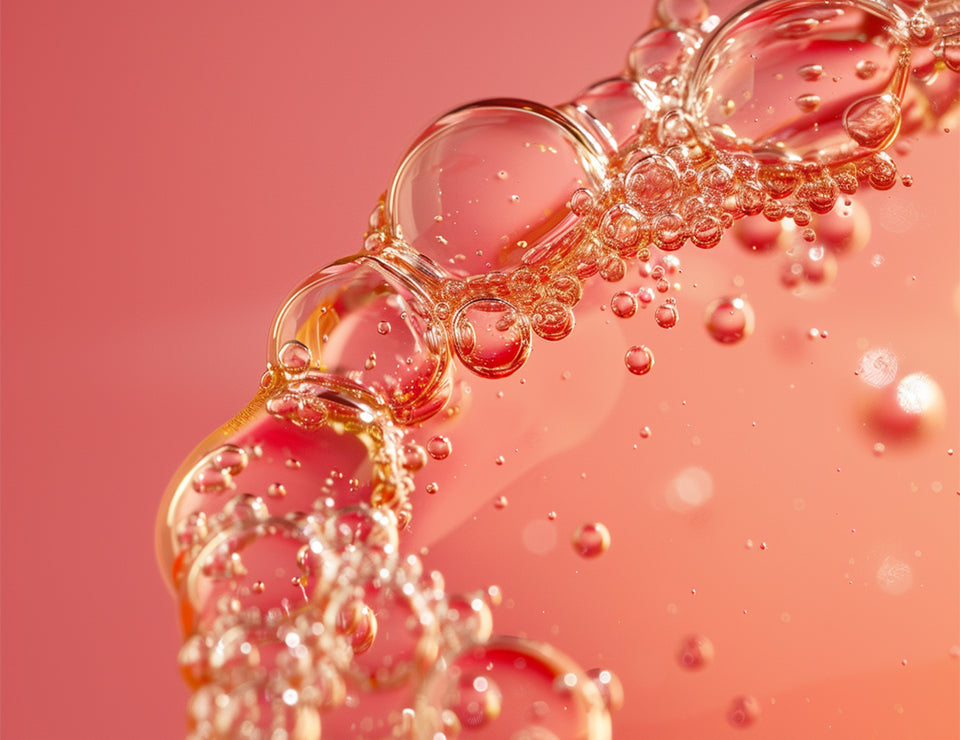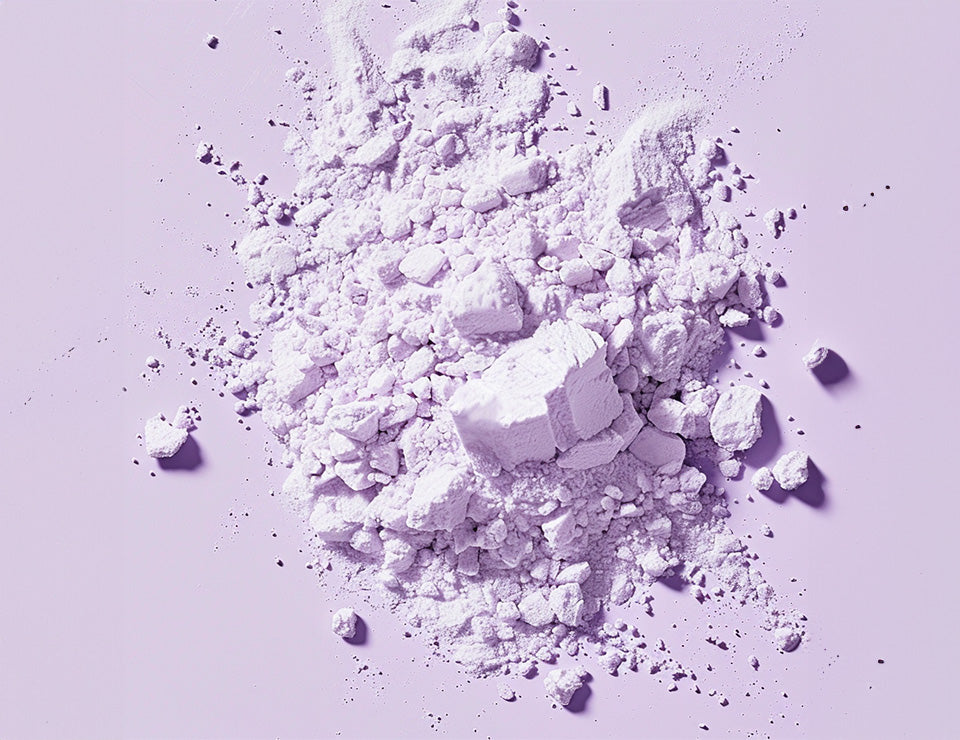Licorice Root at a Glance
- Source: Extracted from the roots of Glycyrrhiza glabra using alcoholic or aqueous methods.
- Effects on the Skin: Soothing, brightening, anti-inflammatory, and antioxidant.
- Ideal for: People with sensitive skin, pigmentation spots, acne, and inflammatory skin conditions such as rosacea or eczema.
- Interesting Fact: Can reduce hyperpigmentation even better than hydroquinone.
The Effects of Licorice Root
Licorice root contains a variety of bioactive components, including glabridin, glycyrrhizin, and licochalcone A, which benefit the skin in various ways.- Soothing and Anti-inflammatory: Glycyrrhizin, a major component of licorice root, exhibits strong anti-inflammatory properties effective in treating inflammatory skin conditions like atopic dermatitis, rosacea, and eczema. Glycyrrhizin modulates the inflammatory process by reducing the production of pro-inflammatory cytokines and inhibiting the activity of COX-2 and iNOS.
- Reduces Hyperpigmentation: Glabridin, another valuable molecule in licorice root, is known for its skin-brightening properties. Studies have shown that glabridin inhibits tyrosinase activity, a key enzyme in melanin production, thus reducing the formation of skin discolorations. It also has antioxidant properties, further improving the appearance of the skin.
- Antioxidant: The antioxidant properties of glabridin and licochalcone A help protect the skin from free radicals generated by UV radiation and pollution. These antioxidants prevent lipid peroxidation in cell membranes and help the skin maintain its natural glow and elasticity.
Proper Application
- Frequency: For optimal results, you should use products containing licorice root extract daily - whether in the morning and/or evening is up to you.
- Concentration: A concentration of 0.5% to 2% has been found effective in reducing skin discolorations and soothing inflammation.
- Combining with Other Ingredients: It pairs excellently with other soothing and moisturizing ingredients.
Licorice Root Extract vs. Dipotassium Glycyrrhizinate: What's the Difference?
The main difference between licorice root extract and dipotassium glycyrrhizinate lies in the concentration and stability of the active ingredients. Dipotassium glycyrrhizinate is a more stable derivative of glycyrrhizin, particularly effective in reducing skin inflammation and supporting wound healing. Studies have shown that dipotassium glycyrrhizinate improves skin barrier function and accelerates healing processes in skin injuries. Due to its high efficacy and stability, dipotassium glycyrrhizinate is often preferred for treating sensitive and inflamed skin.
Sources
- Ciganović P, Jakimiuk K, Tomczyk M, Zovko Končić M. Glycerolic Licorice Extracts as Active Cosmeceutical Ingredients: Extraction Optimization, Chemical Characterization, and Biological Activity. Antioxidants (Basel). 2019 Oct 1;8(10):445. doi: 10.3390/antiox8100445. PMID: 31581512; PMCID: PMC6826613.
- Pastorino G, Cornara L, Soares S, Rodrigues F, Oliveira MBPP. Liquorice (Glycyrrhiza glabra): A phytochemical and pharmacological review. Phytother Res. 2018 Dec;32(12):2323-2339. doi: 10.1002/ptr.6178. Epub 2018 Aug 17. PMID: 30117204; PMCID: PMC7167772.
- Naveed, Akhtar & Khan, Haji M. shoaib & Iqbal, Amna & Khan, Barkat & Khan, Sajid & Bashir,. (2011). GLYCYRRHIZA GLABRA EXTRACT CREAM: EFFECTS ON SKIN PIGMENT "MELANIN".
- Cerulli, Antonietta, Milena Masullo, Paola Montoro, and Sonia Piacente. 2022. "Licorice (Glycyrrhiza glabra, G. uralensis, and G. inflata) and Their Constituents as Active Cosmeceutical Ingredients" Cosmetics 9, no. 1: 7.
- Fatoki, Toluwase Hezekiah, Basiru Olaitan Ajiboye, and Adeyemi Oladapo Aremu. 2023. "In Silico Evaluation of the Antioxidant, Anti-Inflammatory, and Dermatocosmetic Activities of Phytoconstituents in Licorice (Glycyrrhiza glabra L.)" Cosmetics 10, no. 3: 69.
- Ruan SF, Hu Y, Wu WF, Du QQ, Wang ZX, Chen TT, Shen Q, Liu L, Jiang CP, Li H, Yi Y, Shen CY, Zhu HX, Liu Q. Explore the Anti-Acne Mechanism of Licorice Flavonoids Based on Metabonomics and Microbiome. Front Pharmacol. 2022 Feb 8;13:832088. doi: 10.3389/fphar.2022.832088. PMID: 35211023; PMCID: PMC8861462.
- Raoufinejad, Kosar & Rajabi, Mehdi. (2021). Licorice in the Treatment of Acne Vulgaris and Postinflammatory Hyperpigmentation: A Review. Journal of Pharmaceutical Care. 8. 10.18502/jpc.v8i4.5242.
- Leite CDS, Pires OC, Tenis DG, Ziegler JVN, Priolli DG, Rocha T. Effects of dipotassium glycyrrhizinate on wound healing. Acta Cir Bras. 2021 Oct 8;36(8):e360801. doi: 10.1590/ACB360801. PMID: 34644769; PMCID: PMC8516426.
- Leite CDS, Bonafé GA, Pires OC, Santos TWD, Pereira GP, Pereira JA, Rocha T, Martinez CAR, Ortega MM, Ribeiro ML. Dipotassium Glycyrrhizininate Improves Skin Wound Healing by Modulating Inflammatory Process. Int J Mol Sci. 2023 Feb 14;24(4):3839. doi: 10.3390/ijms24043839. PMID: 36835248; PMCID: PMC9965141.
- Rocha, Thalita & Leite, Camila & Tenis, Danielle & Ziegler, Jussara & Priolli, Denise. (2019). Glycyrrhizinate Dipotassium (DPG) Effects over Skin Wound Healing. The FASEB Journal. 33. 10.1096/fasebj.2019.33.1_supplement.lb167.
- Francesca Palone, Emanuela Pasquali, Paola Giardullo, Laura Stronati, Roberta Vitali, Mariateresa Mancuso; Low Dose of Dipotassium Glycyrrhizate Counteracts Atherosclerosis Progression in Apoe–/– Female Mice. J Vasc Res 29 October 2019; 56 (5): 267–270
- Bonafé GA, Dos Santos JS, Ziegler JV, Umezawa K, Ribeiro ML, Rocha T, Ortega MM. Growth Inhibitory Effects of Dipotassium Glycyrrhizinate in Glioblastoma Cell Lines by Targeting MicroRNAs Through the NF-κB Signaling Pathway. Front Cell Neurosci. 2019 May 28;13:216. doi: 10.3389/fncel.2019.00216. PMID: 31191251; PMCID: PMC6546822.









